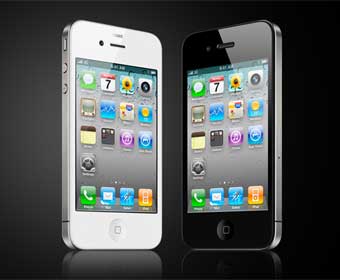There was no great surprise to Tuesday's announcement that US CDMA operator Verizon Wireless has finally managed to secure a CDMA version of the Apple iPhone 4. The news is a boon for the Verizon network, which is widely perceived as offering the best quality in the country. iPhone pioneer AT&T meanwhile, could lose subscribers to its closest rival.
January 12, 2011

There was no great surprise to Tuesday’s announcement that US CDMA operator Verizon Wireless has finally managed to secure a CDMA version of the Apple iPhone 4. The news is a boon for the Verizon network, which is widely perceived as offering the best quality in the country. iPhone pioneer AT&T meanwhile, could lose subscribers to its closest rival.
But analysts note that Verizon will have to pay a price to offer the device, in one respect, quite literally. Verizon is likely to have to provide a subsidy of $300-400 for each iPhone it sells, similar to that shouldered by AT&T’s, which could lead to a subsidy bill of $3-4bn if Verizon sells ten million of the devices this year.
According to Mike Roberts, principal analyst at Informa, this number is not beyond the realms of possibility. It’s also a price Verizon is likely willing to pay in order to land millions of new, high-value smartphone subscriptions.
AT&T has built a sizable lead in the high end of the market, largely due to the iPhone. In fact in the third quarter of 2010, AT&T had more than twice as many smartphone subscriptions as Verizon, at 49 million compared to 20 million, and smartphone subscriptions at AT&T have 1.7 times the ARPU of non-smartphone subscriptions.
So although the majority of AT&T iPhone customers are locked in to lengthy contracts, the operator will have to battle fiercely for new iPhone customers as well as ensure that it keeps those that can leave its network when their contracts run out.
Some analysts have suggested that there may be an upside for AT&T in Tuesday’s announcement, however. AT&T has suffered high profile performance issues as its network as sagged beneath the weight of its data-hungry smartphone users. This burden could be eased if, as expected, a significant number of its high end customers churn to Verizon, resulting in a better experience for those who remain.
The two carriers are evenly matched at the head of the US carrier pack. Estimates for end December 2010 from Informa Telecoms & Media put AT&T marginally ahead on 95.5 million subscribers, with Verizon on 94.2 million.
For Apple, it makes sense to sell the iPhone through as many operators as possible, and the introduction of a CDMA device means expanding its availability to a segment of the US mobile market that has been unwilling to leave Verizon. Mike Roberts believes there is strong demand for the iPhone among customers of an operator who don’t want to change carrier just to buy the device.
Apple’s global iPhone sales increased over 67 per cent between the second and third quarters of 2010, following the launch of the iPhone 4. At the same time as it expanded the number of operators it offers the device with, as well as offering older versions at lower prices. In October last year it emerged that Apple had broken into the top five handset vendors by shipment volumes for the first time, taking the fourth spot for 3Q10 and the Verizon deal will likely see Apple open up a lead on RIM, which sits behind it, in fifth place.
The iPhone 4 will be available on the Verizon Wireless network beginning February 10 for a retail price of $199.99 for the 16GB model and $299.99 for the 32GB model with a new two year customer agreement.
Meanwhile, Roberts notes that the industry will have to wait and see what the CDMA iPhone means for the various vendors that supply components for the device in the long term. “Apple is an expert at maximising margins and it will not want these to be diluted by offering two versions of the same device. We will have better visibility on this when the components of the new iPhone become known,” Roberts said.
About the Author(s)
You May Also Like








.png?width=300&auto=webp&quality=80&disable=upscale)


_1.jpg?width=300&auto=webp&quality=80&disable=upscale)


.png?width=800&auto=webp&quality=80&disable=upscale)